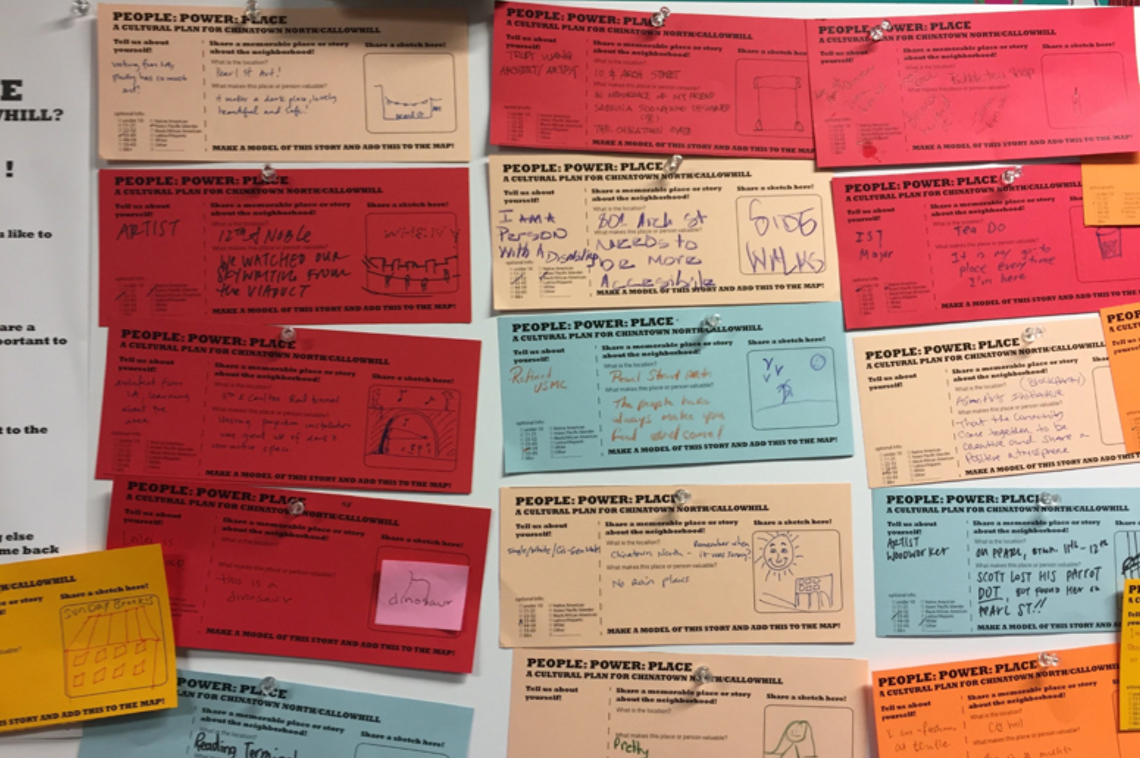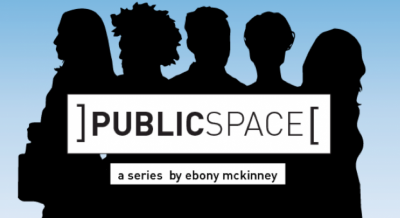
As Danya Sherman pointed out in her field scan on housing for ArtPlace Exploring the Ways that Arts and Culture Intersects with Housing, “One’s housing may be an opportunity to accumulate wealth, have short commutes, and live in well-resourced school districts, while others’ makes them particularly vulnerable to health hazards, economic and environmental shocks, and can prevent them from accessing good jobs, education, and other key resources.”
Architect, designer and organizer Theresa Hwang is dynamic and direct. During our short interview she spoke passionately and eloquently about arts, power, community, creativity, and the pivotal role that housing plays in our lives. Hwang gained crucial initial field experience as Director of Community Design and Planning at the Skid Row Housing Trust. While there, she became an Enterprise Rose Architectural Fellow and acted as an intermediary between the architect and residents. She was not only involved with the design and financing of the structure, but also with the services and programs at the Trust, a non-profit permanent supportive housing organization.
In 2015, she founded the Dept. of Places, which serves as the locus of her various design activities and allows her to coordinate her “people, power, place” philosophy. As part of her current work, she sits on the board of a community development corporation and works to innovate creative strategies in affordable housing. She also facilitates neighborhood development, cultural planning and serves as an adjunct professor. Though she is currently based in Los Angeles, she routinely works all around the country.
Q: Tell me about participatory design. Who are your partners and how do you address miscommunication?
I think of participatory design as a process where the community is centered in the decision-making process. It’s about the designer facilitating a process that's legible and accessible, but also including non-designers to understand and articulate the issues of the community and to ensure that whatever type of decisions are made are actually decided with the community. A lot of it is really about making sure that the people who are directly impacted by the issues are part of the process.
I partner deeply with embedded community organizations and bring technical skill and a facilitation process that really gets at the core issues and works collectively towards a shared solution.
Sometimes local, community leadership may need to be called upon a little bit more specifically, but there are always existing assets within communities. As designers we need to always acknowledge that and not act like we're working with a blank slate.
And the more transparency and exchange of information around the process and decision-making the better, because I find tensions arise when people don't know what’s going on.
Q: What’s the relationship between the market and the neighborhoods you work in? In your opinion, how is housing connected to economic mobility?
In terms of market forces, I work in a lot of communities that are facing gentrification. So there’s always that eminent displacement issue. So I ask—how do we really begin putting anchors within the community and solidify an existing identity?
I know economic mobility is huge. Housing is like your first need, right? Without the stable security of a roof over your head, it’s really hard to sustain all of the other elements that you need to live a fulfilling life. That becomes really a foundational piece.
I think making sure that we create opportunities for sustained economic development is important and those are always recommendations especially when I work on a neighborhood scale.
Q: What’s your perspective on the difference between design and art? Do you incorporate arts and culture into your projects or process?
With design, I feel like the function always comes first and that there is always some type of problem that we're directly addressing or an issue we're in service to. A lot of times, in reference to art, there will be more flexibility in terms of potential outcomes.
I think in spirit they're very much like sisters in that we're trying to leverage creativity and openness to redefine things as much as possible.
I always try to have an ideation and a generation element to all of the design projects. I think a lot of times, with traditional design work, the people with the design skills will solicit some information and then go through a more internal studio design process where they'll come up with potential options. That tends to be more of a reactionary process. In my projects, I facilitate a hands-on creative process with familiar materials like construction paper, crayons—things that aren't so precious and intimidating.
The foundation of ideas comes from the community. They're actually generating potential design options, so it's a little bit more proactive instead of responsive. From there, I take some of the guidance and direction from the community and infuse with technical expertise and training. Basically, how do we take their core idea but then scaffold it with more resources?
Q: I like to talk about future trends with people. What do you see as an important issue on the horizon related to housing?
I continue to think about permanent housing for the most vulnerable. I think it becomes really important to make sure that that becomes a priority. We're at a point where it’s endemic. So I think beginning to prioritize some populations that are facing the biggest barriers is important. Such as the homeless, people with disabilities, the lowest income. I think any time we can rethink housing so that it can potentially lower costs or strengthen cohesiveness, that's always good too.
I've also been thinking about, especially in the last two years, how design becomes more actively involved in racial justice. A lot of the things we talk about are more products of racial inequality and racism like affordable housing or lack of transit, which are important to work on. But if there’s a way we can also begin impacting bias and stereotypes and a lot of this racial tension that then develops—design can be a little more powerful in terms of its role.
Q: How did you decide to be a designer/community organizer?
I grew up in an immigrant community as a woman, and my perspective has always been formed through a very specific lens. I was just fortunate. I grew up in New York where there really was a deep Korean immigrant community, so I was able to celebrate my identity. In college, I did a lot of organizing around women’s issues, reproductive rights, and Asian American identity. So there’s always been a need to vocalize certain specific rights and needs of communities that don't typically have the space to say them.






